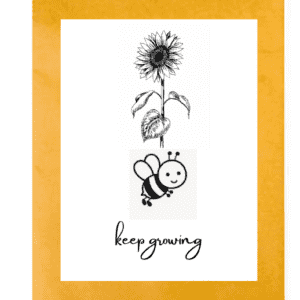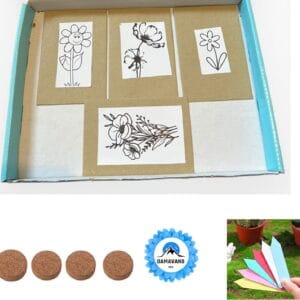+447709283333 | info@damavandpro.com

How to Grow Sunflowers
Easy Steps to Cultivate Beautiful Sunflowers
Growing sunflowers is a delightful activity for the whole family. Learn how to nurture these charming flowers with our simple guide.
Sunflowers hold a special place in the hearts of many, with their vibrant yellow blooms stealing the show. However, did you know that you can also cultivate varieties with striking rusty-red, green, and white flowers?
Blooming Time for Annual Sunflowers
Annual sunflowers grace our gardens from summer to autumn. Depending on the variety, they burst into bloom 11-18 weeks after planting from seed. To ensure a continuous display of sunny blossoms throughout summer, consider sowing sunflower seeds every couple of weeks.

These flowers are not only visually appealing but also easy to grow from seed, making them perfect companions for gardening with children. With heights reaching up to 3m, they proudly showcase their impressive, long-lasting flowers, adding charm to any garden or allotment.
Fun fact: Did you know sunflowers are closely related to Jerusalem artichokes, Helianthus tuberosus? Planting Jerusalem artichokes may surprise you with sunflower-like blooms, given the right conditions of ample sunshine and warmth.
Step-by-Step Guide to Growing Sunflowers
Cultivating sunflowers from seed is a straightforward process. All you need is a sunny, sheltered spot and fertile soil. Enhance your soil by adding well-rotted manure or garden compost before planting. Be sure to protect young plants from slugs and snails, and remember to water them regularly. If your sunflowers are in an exposed position, consider staking them for added support.
Choosing the Perfect Spot for Sunflowers
Sunflowers thrive in sunny locations with rich, fertile soil. While they can be grown in pots, planting them directly in the ground is ideal for achieving maximum height.
Optimal Timing for Planting Sunflower Seeds
The prime time to plant sunflower seeds is between April and May. Start by sowing seeds individually in small pots filled with peat-free, multi-purpose compost. Cover the pots with clear plastic to create a warm, germination-friendly environment. Once the seedlings emerge, remove the plastic cover and gradually harden them off before transplanting them outdoors.
How to Grow Sunflowers
If your garden is plagued by slugs and snails, consider potting sunflowers into larger containers before transplanting them into the soil. Regardless of size, avoid planting seedlings outdoors until the soil has significantly warmed and the risk of frost has passed.
Prepare the planting site by removing weeds and enriching the soil with organic matter like compost or well-rotted manure. Remember to water thoroughly and stake taller varieties for added stability.

Nurturing Sunflowers in Containers
Sunflowers can thrive in pots, though they may not reach the same heights as those planted in the ground. Keep pot-grown sunflowers well-watered, especially during hot weather, and feed them fortnightly with a nitrogen-rich fertilizer. Once they begin to bloom, switch to a high-potash fertilizer for optimal flowering.
Caring Sunflowers
Annual sunflowers have a high water requirement and may suffer if allowed to dry out.

For those grown for their height, feed them regularly with a nitrogen-rich fertilizer, switching to a potash-rich tomato feed just before flowering. To prevent wind damage, stake tall varieties securely. After the flowering season, leave the faded flowerheads for the birds to enjoy before composting the plants.
Propagation Tips for Sunflowers
Once sunflower heads have finished flowering, they develop seeds that can be harvested for future planting. After removing the seeds from the seedhead, allow them to dry thoroughly before storing them in a dry spot. Be sure to leave some seeds for the birds to enjoy.
Troubleshooting Common Sunflower Issues
While sunflowers are generally trouble-free, young seedlings may fall victim to slug and snail damage. Regularly inspecting and removing these pests can help keep your sunflowers healthy. Consider using wildlife-friendly copper tape as a deterrent.
Recommended Sunflower Varieties
Sunflower ‘Russian Giant’
Known for its impressive size, ‘Russian Giant’ boasts traditional yellow flowers and can reach heights of 3m.

Sunflower ‘Shock-o-Lat’ F1
This striking variety features red-flowered sunflowers with bronze-red petals, yellow tips, and edible seeds.
Helianthus ‘Lemon Queen’
This perennial sunflower delights with its small, lemon-yellow blooms and returns year after year.
Sunflower ‘Choco Sun’
A favorite among dwarf sunflowers, ‘Choco Sun’ produces large yellow flowerheads and is perfect for pots.
Frequently Asked Questions
How long do sunflowers take to grow?
Sunflowers can reach heights of 2m or more in just three months, depending on various factors such as variety and growing conditions.
Are sunflowers perennial?
Sunflowers can be either annual or perennial, with tall, single-stemmed varieties typically being annual.
When do sunflowers bloom?
Sunflowers typically bloom from summer to autumn, usually around July to September.
Help! My sunflowers have black spots on the leaves
Black spots on sunflower leaves are likely caused by sooty mold, which can result from aphid infestations. Removing aphids can help alleviate the issue.
One of my sunflowers has multiple heads growing along the stem. Is this normal?
Yes, it’s perfectly normal for some sunflowers to produce multiple heads along the stem, resulting in more blooms.
Why are the bottom leaves of my sunflower seedlings turning yellow?
Seed leaves are temporary and will naturally wither as the true leaves grow and begin photosynthesizing. This is a normal part of the plant’s growth process and nothing to be concerned about.
-

10 x Sunflower Seeds Wedding Favors Communion Christening Baby Show
£8.99 -


Childrens Gardening Kit: Cultivate Creativity and Love for Nature with Wildflower Plant Growing Kit for Kids
£12.00 -


Dwarf Sunflower Seeds: A Beautiful and Beneficial Addition to Any Garden
£2.99 – £100.00Buy Now This product has multiple variants. The options may be chosen on the product page -


Sunflower Seeds Giant Yellow Helianthus, Ideal for beds and Borders Organic 1kg
£2.99 – £189.00Buy Now This product has multiple variants. The options may be chosen on the product page
